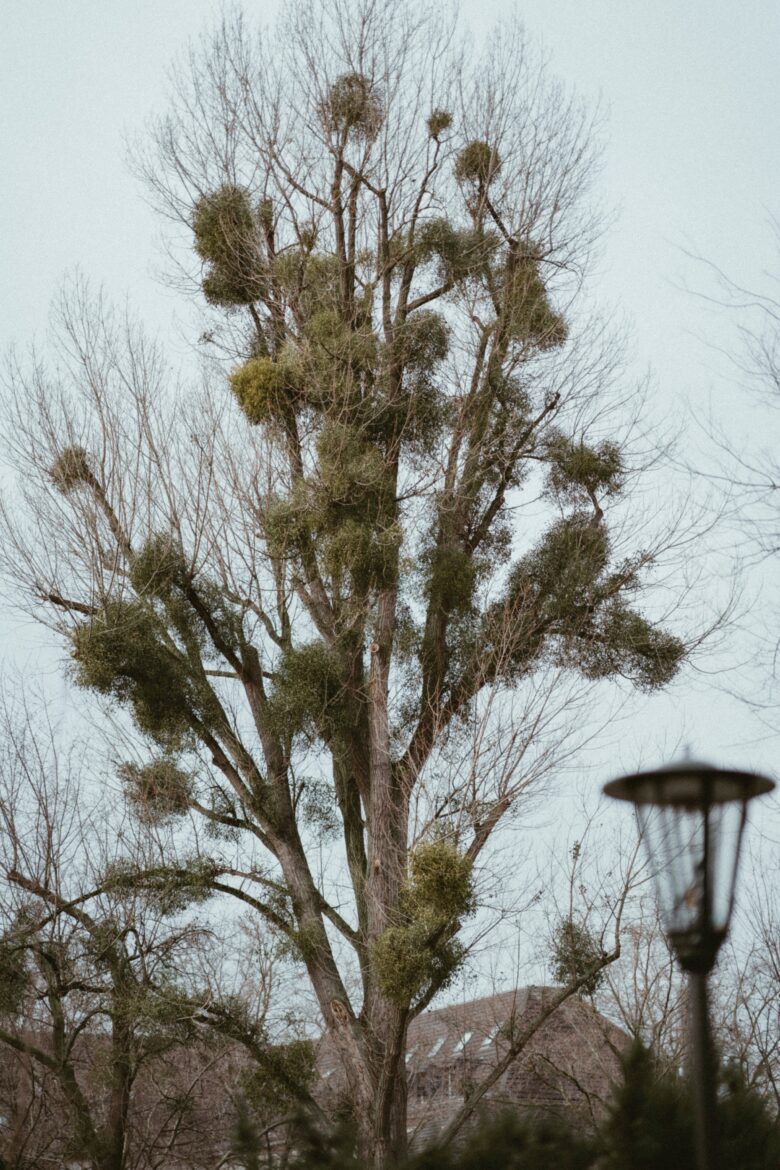
This is the time of year when you can spot mistletoe high up in the treetops! It may be challenging to spot during the spring, summer, and even fall, as the leaves mask the round clusters of mistletoe very well. However, once the leaves drop, you may be surprised what lingers in your trees! Yep! You guessed it. Mistletoe! Continue reading to learn all about this parasite and the answer to the common question, “Is Mistletoe a nuisance?”
Where does it grow?
Mistletoe grows worldwide, but specifically, it thrives in zones 5-9. Since Fayetteville, NC is located in zone 8b, it is considered hardy to our area. Mistletoe can be found in treetops, primarily where birds are perched.
What is it?
Mistletoe is a hemiparasitic plant. What is a hemiparasite? It is a plant that partially relies on a host. Mistletoe sinks its roots into the tree branch but can also perform photosynthesis. Hemiparasitic plants use the host tree to obtain water, nutrients, and minerals but possess chlorophyll for photosynthesis.
How does it get there?
Birds are responsible for the spread of mistletoe. This is because mistletoe produces berries, thus providing birds with food. The birds eat the berries and excrete the berries onto the branches. This deposits the mistletoe onto its new host. The roots extend from the deposited seed, and the hemiparasitic plants grow!
So, is Mistletoe a Nuisance?
The answer to this question is maybe. If you look up into your tree and see only a few mistletoe plants and your tree is otherwise healthy, there is no need to remove the mistletoe. The keyword to this part of the answer is healthy! You will want to remove the mistletoe if you have a struggling tree. Remember, mistletoe is a parasite that uses the host tree for nutrients and water. If a tree is already unhealthy, having a parasitic plant zapping nutrients and minerals from the tree may cause the tree to decline even more.
